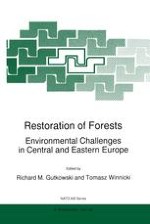In the conflict between logging as a material resource and preservation the forests are becoming depleted throughout the world and this depletion is aggravated by the effects of air pollution. The concept of utilization is thus now being expanded to include vital societal values.
These issues are nowhere more acute than in Central and Eastern Europe, where obsolete, poorly maintained industrial plant is common. Air pollutant levels are so high that one area has been called the Black Triangle. Timber is required in this region as a building material and logging for fuelwood is practised, giving rise to a complex linkage between industry, energy supply, deforestation, agriculture, value-added forestry products and economic development. This book presents current information on national and regional issues relating to environmental threats to forest land, focusing on: ecology, environment and science; forest ownership and management; forest product utilization; government and public agency roles.
The recommendations, action items and the human network needed for regional-level implementation are detailed in `situation', `position' and `state of the art' papers. The final objective is to develop a plan of action to help abate the negative impacts while sustaining or expanding the forests, the economy and the energy sufficiency of the region.
